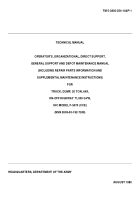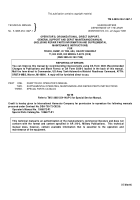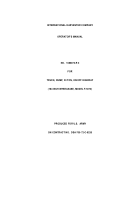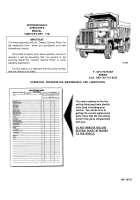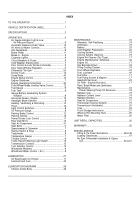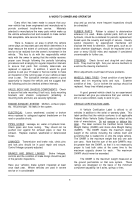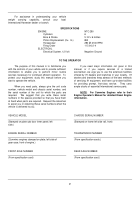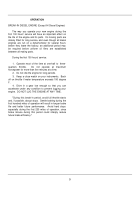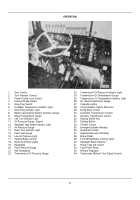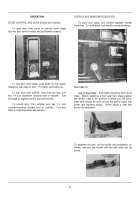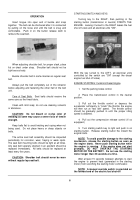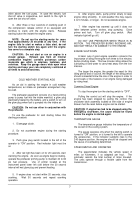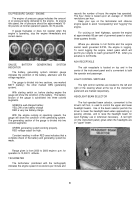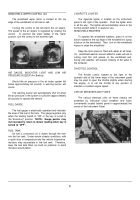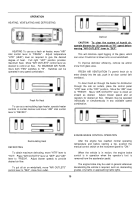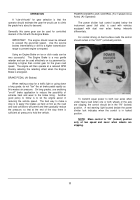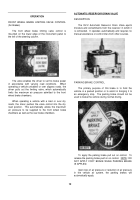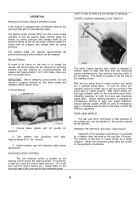TM-5-3805-254-14-P-1 - Page 7 of 590
A WORD TO OWNER AND OPERATOR
Every effort has been made to assure that your
new vehicle has been engineered and manufactured to
provide continued trouble-free service.
Materials
selected to manufacture the many parts which make up
the vehicle exhaustive test and research to make certain
that acceptable, safe service life is realized.
There is, however, an area in which the vehicle
owner plays an important part and which determines in a
large measure the extent of continued, safe trouble-free
service to be realized from the owner's investment in the
vehicle.
This has to do with the responsibility which
rests with the owner in seeing that the vehicle receives
proper care through following the periodic lubricating
procedures and arranging for regular inspection intervals
to assure that parts that normally deteriorate are
replaced or repaired.
In addition, it would be good
practice to ask your IH dealer or Service Center to make
an inspection of the running gear of your vehicle at least
once a year.
The lubrication intervals present a good
opportunity to inspect the vehicle, and we suggest that
the following points be checked at these intervals.
AXLES, BODY AND CHASSIS COMPONENTS:
Check
to assure that axle mounting U-bolt nuts, body mounting
brackets and chassis components (attaching or
mounting bolts and nuts) are securely tightened.
ENGINE EXHAUST SYSTEM:
Mufflers, exhaust pipes
etc.
All joints tight.
No leaks in the system.
ELECTRICAL:
Loose, weathered, cracked or broken
wires replaced to safeguard against breakdown on the
road or possible shorts.
PIPES, HOSES:
Leakage, air, water or hydraulic lines.
Check pipes and hose routing.
They should not be
pushed over against hot exhaust pipes or near the
exhaust.
Replace cracked, weathered or deteriorated
hoses.
LINKAGES:
Transmission and brake rods, clevis pins
and lock pins should be in good repair and secure.
Control linkages properly adjusted.
BRAKES AND BRAKE LININGS:
Brake linkages,
controls and the condition of brake linings should be part
of the periodic inspections.
Have your vehicle's brake system inspected at least
once each year.
Where vehicles are used in severe
service or in considerable
stop and go service, more frequent inspections should
be scheduled.
RUBBER PARTS:
Rubber is subject to deterioration
wherever it is used.
Brake cylinder parts, both air and
hydraulic, should be considered for periodic replacement
based upon the severity and length of service.
Usually
careful inspection by experienced mechanics will
disclose the need for attention.
Some parts, such as air
brake chamber diaphragm, should be inspected once a
year or every 50,000 miles and replaced if considered
unserviceable for further use.
STEERING:
Check tie-rod and drag-link and clamp
bolts.
They must be tight.
Ask your service mechanic to
examine the steering mechanism.
Minor adjustments could head off future problems.
WHEELS, RIMS, TIRES:
Check condition of and tighten
wheel and rim mounting bolts and nuts.
Examine
condition of tires.
Cut or broken tire casings should be
replaced.
Keep tires inflated properly.
A good general vehicle check by an experienced
serviceman will give you assurance that your vehicle is
still in a safe condition, ready to work for you.
VEHICLE CERTIFICATION LABEL
A Vehicle Certification Label is affixed to all
vehicles in addition to the serial or warranty plate.
This
label certifies that the vehicle conforms to all applicable
Federal Motor Vehicle Safety Standards in effect at the
date of manufacture.
Do not remove or deface this
label.
The label contains the Certified Gross Vehicle
Weight Rating (GVWR) and Gross Axle Weight Rating
(GAWR).
The GVWR means the maximum design
weight of the vehicle including the vehicle itself and
everything that is loaded into or onto the single vehicle.
The GAWR is the maximum weight that any one axle
can carry.
Note that the sum of the axle GAWR's may
be greater than the GVWR, so that it is not necessarily
proper to load both axles at the same time to the
maximum capacity shown for each.
The maximum
GVWR should never be exceeded.
The GAWR is the maximum weight measured at
the ground permissible on that axle system.
These
ratings are developed on the basis of the minimum
component capability, be it axles, springs or tires.
1
Back to Top

